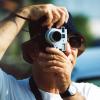Relieving photographers of a burden
-
Recently Browsing 0 members
- No registered users viewing this page.
-
Similar Content
-
- 13 replies
- 750 views
-
- 371 replies
- 108,183 views
-
- 6,706 replies
- 400,165 views
-
The Rolleicord photographer
By Guest,
- 8 replies
- 588 views
-
- 2,757 replies
- 399,028 views
-






Recommended Posts
Join the conversation
You can post now and register later. If you have an account, sign in now to post with your account.
Note: Your post will require moderator approval before it will be visible.